

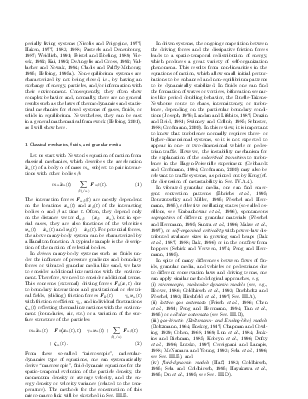

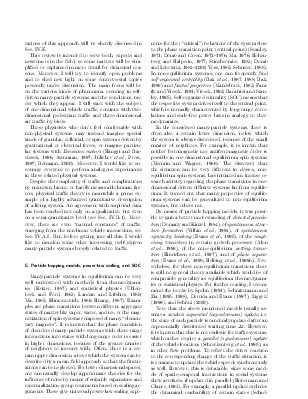
















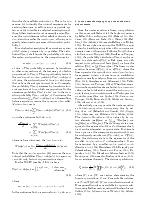
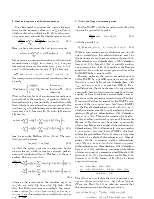
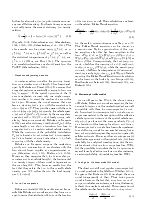




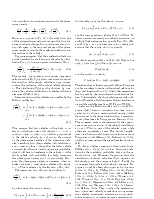


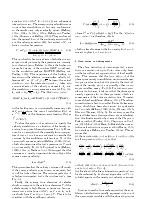







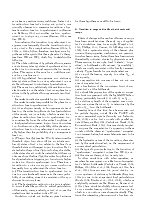










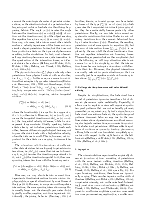





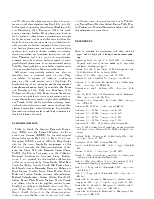



Traffic and Related Self-Driven Many-Particle Systems
Dirk Helbing1,2,3,[1]
1Institute for Economics and Traffic, Dresden University of Technology,
Andreas-Schubert-Str. 23, D-01062 Dresden, Germany
2II. Institute of Theoretical Physics, University of Stuttgart, Pfaffenwaldring 57/III, D-70550 Stuttgart, Germany
3Collegium Budapest – Institute for Advanced Study,
Szenth´aroms´ag utca 2, H-1014 Budapest, Hungary
|
I. Introduction A. Motivation: History of traffic modelling and |
2 |
|
traffic impact on society |
2 |
|
B. Driven many-particle systems 1. Classical mechanics, fluids, and granular |
2 |
|
media |
3 |
|
C. Self-driven many-particle systems |
4 |
|
1. The concept of social (behavioral) forces |
4 |
|
D. What this review is about E. Particle hopping models, power-law scaling, |
4 |
|
and SOC 1. The asymmetric simple exclusion process |
5 |
|
(ASEP) |
6 |
|
F. Active Brownian particles |
6 |
|
1. Pumped Brownian particles |
6 |
|
2. Dissipative Toda and Morse chains |
6 |
|
3. Active walker models |
7 |
|
4. Pattern formation of bacterial colonies |
7 |
|
5. Trail formation by animals and pedestrians |
7 |
|
G. Vehicle and pedestrian traffic |
7 |
|
II. Empirical findings for freeway traffic |
7 |
|
A. Measurement techniques |
8 |
|
B. Fundamental diagram and hysteresis |
8 |
|
C. Time headways, headways, and velocities |
10 |
|
D. Correlations |
12 |
|
E. Congested traffic |
13 |
|
1. Jams, stop-and-go waves, and power laws |
13 |
|
2. Extended congested traffic |
14 |
|
3. Pinch effect |
15 |
|
F. Cars and trucks |
15 |
|
G. Some critical remarks |
16 |
|
III. Modelling approaches for vehicle traffic |
17 |
|
A. Microscopic follow-the-leader models |
17 |
|
1. Non-integer car-following model |
17 |
|
2. Newell and optimal velocity model |
18 |
|
3. Intelligent driver model (IDM) |
19 |
|
B. Cellular automata (CA) |
19 |
![]() Since the subject of
traffic dynamics has captured the interest of physicists, many surprising
effects have been revealed and explained. Some of the questions now understood
are the following: Why are vehicles sometimes stopped by so-called “phantom
traffic jams”, although they all like to drive fast? What are the mechanisms
behind stop-and-go traffic? Why are there several different kinds of
congestion, and how are they related? Why do most traffic jams occur
considerably before the road capacity is reached? Can a temporary reduction of
the traffic volume cause a lasting traffic jam? Under which conditions can
speed limits speed up traffic? Why do pedestrians moving in opposite directions
normally organize in lanes, while similar systems are “freezing by heating”?
Why do panicking pedestrians produce dangerous deadlocks? All these questions
have been answered by applying and extending methods from statistical physics
and non-linear dynamics to self-driven many-particle systems. This review
article on traffic introduces (i) empirically data, facts, and observations,
(ii) the main approaches to pedestrian and vehicle traffic, (iii) microscopic
(particlebased), mesoscopic (gas-kinetic), and macroscopic (fluid-dynamic)
models. Attention is also paid to the formulation of a micro-macro link, to
aspects of universality, and to other unifying concepts like a general
modelling framework for self-driven many-particle systems, including spin
systems. Subjects like the optimization of traffic flows and relations to biological
or socio-economic systems such as bacterial colonies, flocks of birds, panics,
and stock market dynamics are touched as well.
Since the subject of
traffic dynamics has captured the interest of physicists, many surprising
effects have been revealed and explained. Some of the questions now understood
are the following: Why are vehicles sometimes stopped by so-called “phantom
traffic jams”, although they all like to drive fast? What are the mechanisms
behind stop-and-go traffic? Why are there several different kinds of
congestion, and how are they related? Why do most traffic jams occur
considerably before the road capacity is reached? Can a temporary reduction of
the traffic volume cause a lasting traffic jam? Under which conditions can
speed limits speed up traffic? Why do pedestrians moving in opposite directions
normally organize in lanes, while similar systems are “freezing by heating”?
Why do panicking pedestrians produce dangerous deadlocks? All these questions
have been answered by applying and extending methods from statistical physics
and non-linear dynamics to self-driven many-particle systems. This review
article on traffic introduces (i) empirically data, facts, and observations,
(ii) the main approaches to pedestrian and vehicle traffic, (iii) microscopic
(particlebased), mesoscopic (gas-kinetic), and macroscopic (fluid-dynamic)
models. Attention is also paid to the formulation of a micro-macro link, to
aspects of universality, and to other unifying concepts like a general
modelling framework for self-driven many-particle systems, including spin
systems. Subjects like the optimization of traffic flows and relations to biological
or socio-economic systems such as bacterial colonies, flocks of birds, panics,
and stock market dynamics are touched as well.
|
1. The Nagel-Schreckenberg model and its |
|
|
slow-to-start variant |
20 |
|
2. Some other cellular automaton models |
20 |
|
3. The discrete optimal velocity model |
21 |
|
4. Comparison |
21 |
|
C. Master equation 1. Solution methods, mapping to spin chains, |
21 |
|
and matrix product ansatz 2. Mean field approach and Boltzmann |
22 |
|
equation |
23 |
|
3. TASEP and Nagel-Schreckenberg model |
23 |
|
4. Nucleation and jamming transition |
24 |
|
5. Fokker-Planck equation |
24 |
|
D. Macroscopic traffic models |
24 |
|
1. The Lighthill-Whitham model (LW model) |
24 |
|
2. The Burgers equation |
26 |
|
3. Payne’s model and its variants |
26 |
|
4. The models by Prigogine and Phillips 5. The models by Whitham, Ku¨hne, Kerner, |
27 |
|
Konha¨user, and Lee |
27 |
|
6. The Weidlich-Hilliges model 7. Common structure of macroscopic traffic |
28 |
|
models E. Gas-kinetic traffic models and micro-macro |
28 |
|
link |
28 |
|
1. Prigogine’s Boltzmann-like model |
28 |
|
2. Paveri-Fontana’s model |
30 |
|
3. Construction of a micro-macro link 4. The non-local, gas-kinetic-based traffic |
30 |
|
model (GKT model) |
31 |
|
5. Navier-Stokes-like traffic equations |
32 |
|
6. Simultaneous micro- and macrosimulation |
33 |
|
7. Mesoscopic traffic models |
34 |
|
IV. Properties of traffic models |
34 |
|
A. Identical vehicles on homogeneous freeways 1. “Phantom traffic jams” and stop-and-go |
34 |
|
traffic 2. (Auto-)Solitons, Korteweg-de-Vries |
34 |
|
equation, and Ginzburg-Landau equation 3. Jam formation: Local breakdown and cluster effects, segregation, and |
35 |
|
self-organized criticality (SOC) |
36 |
CONTENTS
4. Instability diagram, stop-and-go waves,
metastability, and hysteresis 37
5. Self-organized, “natural” constants of
traffic flow 38
6. Kerner’s hypotheses 39
B. Transition to congested traffic at bottlenecks
and ramps 40
1. Phase diagram of traffic states at
inhomogeneities 42
2. Coexistence of states and “pinch effect” 44
C. Heterogeneous traffic 45
1. Power-law platoon formation and quenched
disorder 45
2. Scattering 46
D. Multi-lane traffic and synchronization 46
1. Gas-kinetic and macroscopic models 46
2. Microscopic models and cellular automata 47
E. Bi-directional and city traffic 47
F. Effects beyond physics 48
G. Traffic control and optimization 48
V. Pedestrian traffic 49
A. Observations 49
B. Behavioral force model of pedestrian dynamics 50
C. Self-organization phenomena and
noise-induced ordering 51
1. Segregation 51
2. Oscillations 52
3. Rotation 52
D. Collective phenomena in panic situations 53
1. “Freezing by heating” 53
2. “Faster-is-slower effect” 53
3. “Phantom panics” 54
4. Herding behavior 54
VI. Flocking and spin systems 54
A. Stock markets: Herding and oscillations 55
VII. Summary and outlook 56
Acknowledgments 57
References 57
I. INTRODUCTION
A. Motivation: History of traffic modelling and traffic impact on society
The interest in the subject of traffic dynamics is surprisingly old. In 1935, Greenshields has carried out early studies of vehicular traffic, and already in the 1950ies, a considerable publication activity is documented by journals on operations research and engineering. These papers have already addressed topics like the fundamental diagram between traffic flow and vehicle density or the instability of traffic flow, which are still relevant. The reason becomes understandable through the following quotation from H. Greenberg in 1959:
“The volume of vehicular traffic in the past several years has rapidly outstripped the capacities of the nation’s highways. It has become increasingly necessary to understand the dynamics of traffic flow and obtain a mathematical description of the process.”
More than fourty years later, the situation has deteriorated a lot. Some cities like Los Angeles and San Francisco suffer from heavy traffic congestion around the clock. In Europe, as well, the time that drivers spend standing in traffic jams amounts to several days each year. During holiday seasons, jams may grow up to more than 100 kilometers in size. Vehicle emissions like SO2, NOx, CO, CO2, dust particles, smog, and noise have reached or even exceeded a level comparable to those by industrial production and those by private households, being harmful to the environment and human health. On average, every driver is involved in one accident during his lifetime. In Germany alone, the financial damage by traffic due to accidents and environmental impacts is estimated 100 billion dollars each year. The economic loss due to congested traffic is of the same order of magnitude. However, the traffic volume is still growing because of increased demands for mobility and modern logistics, including e-commerce.
Without any doubt, an efficient transportation system is essential for the functioning and success of modern, industrialized societies. But the days, when freeways were free ways, are over. Facing the increasing problems of individual traffic, the following questions came up: Is it still affordable and publicly acceptable to expand the infrastructure? Will drivers still buy cars in view of streets that effectively turn into parking lots? It is for these reasons that automobile companies started to worry about their own future and decided to spend considerable amounts of money for research on traffic dynamics and the question how the available infrastructure could be used more efficiently by new technologies (telematics).
At this time, physicists were motivated to think about what physics could contribute to the field of traffic dynamics. Although, among mathematicians, physicists, and chemists, there were already some early pioneers like Whitham, Prigogine, Montroll, and Ku¨hne, the main activities started in 1992 and 1993 with papers by Biham et al. (1992), Nagel and Schreckenberg (1992), as well as Kerner and Konh¨auser (1993). These papers initiated an avalanche of publications in various
Уважаемый посетитель!
Чтобы распечатать файл, скачайте его (в формате Word).
Ссылка на скачивание - внизу страницы.